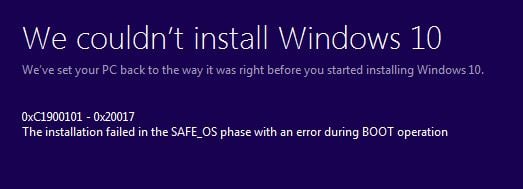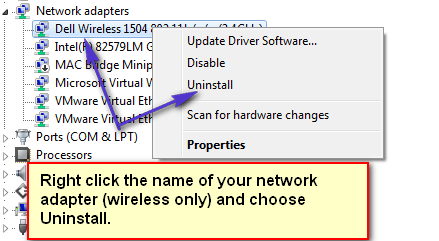Fix Windows 10 Installation Error 0XC1900101 – 0x20017
Error 0xC1900101 – 0x20017 is a Windows 10 installation error that appears when an upgrade or installation to Windows 10 fails. The message it provides is beyond the average user’s understanding, leaving them perplexed and searching for a solution. It states, “The installation failed in the SAFE_OS phase with an error during BOOT operation.” This error may also arise when attempting to upgrade from Windows 7 to Windows 8. After trying several methods to resolve the issue, I will suggest the ones that worked for me, and hopefully, they will work for you as well.

Create a restore point on your Windows system.
Before moving forward, you need to create a restore point in case something goes wrong. Doing so should enable you to return the system to a point at which it worked. To create a system restore point, hold down the Windows Key and press R on your keyboard. In the run dialogue that opens, type…
SystemPropertiesProtection.exe
First, click ‘Create’, then specify the name of a restore point and click ‘OK’ to confirm it. Wait for the dialogue that confirms the restore point creation.

Uninstall conflicting drivers from the Device Manager”
Once again, hold the Windows Key, press R, and type ‘hdwwiz.cpl’ into the run dialog.

When you hit the ‘OK’ button, you will be taken to the Device Manager. From the Device Manager, uninstall the drivers for your wireless adapter and the Bluetooth device.

You also need to locate your Bluetooth adapter in the list and uninstall it. When you choose the uninstall option, it may ask you if you want to uninstall it only or remove the driver package as well. Just choose “Uninstall” so it can keep the original driver. Installing them back should be part of the automatic install or, in the worst-case scenario, you can re-download them from the manufacturer’s site and copy them over to a USB Flash Disk for re-installation, or via Ethernet. Since we are only uninstalling the wireless, the ethernet should still work.
Disable your wireless adapter or Bluetooth from the BIOS.
Now, since the driver has been uninstalled, reboot the PC into BIOS. You will see the options to enter BIOS during the reboot. This will only be available for a few seconds on the POST screen, so you have to be quick in pressing the appropriate key to get into BIOS. On most systems, the key to get into BIOS is F2.
Once in BIOS, go to the Advanced tab using the left/right arrow keys. Then, proceed to the Wireless area. Disable your wireless from here, as well as the bluetooth if available. You’ll need to re-enable them in the same way that you disabled them.
Final Touches
All is good so far! Now, if there are any additional RAM modules installed, remove them. Also, if any external devices are connected, disconnect them. This includes external disk drives, USB printers, etc.
Installing Windows 10
Start the PC, and it should return you to your initial position without internet access. (Note): We have only disabled wireless, not Ethernet. If necessary, you can use an Ethernet cable to connect it directly to the router.
Hold the Windows key, press ‘R’, and in the run dialog, type.
C:\$Windows.~WS\Sources\Windows
Double-click the setup.exe file to run the setup. It should now install successfully without errors. Once it’s all done, re-enable your wireless and Bluetooth and check to see if Windows has automatically picked up the drivers. If not, you can download them from the manufacturer’s site by either transferring the drivers to a USB using another computer, or by connecting the computer in question to the internet and downloading directly from the manufacturer’s site.
In most cases, this fixes the issue since the settings are usually generic. However, with some manufacturers, this may not be the case. If the methods above don’t work for you, then I suggest removing the Network Interface Card / RAM (temporarily) to do the install.